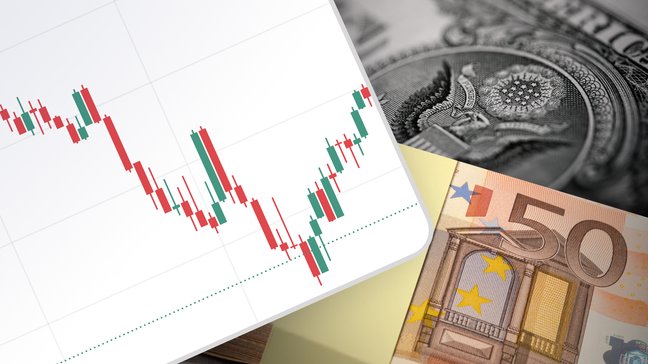US Dollar pares recent losses ahead of the top-tier data as the recent comments from Federal Reserve (Fed) officials push back calls for rate cuts. Also allowing the greenback to recover are the mixed concerns about China and the Middle East, as well as the year-end consolidation amid the holiday mood.
It’s worth noting, however, that the latest weakness in the US data and the dovish halt from the FOMC keeps the USD bears hopeful, which in turn allows the commodities and Antipodeans to edge higher. That said, the equities in the US and the Asia-Pacific zone also drift higher amid the year-end shopping spree.
With this, the US Dollar Index (DXY) snaps a two-day losing streak and exerts downside pressure on the EURUSD, as well as the GBPUSD, especially after the recently downbeat inflation numbers from the Eurozone and the UK.
Elsewhere, slightly positive Aussie data and mixed comments from Reserve Bank of New Zealand (RBNZ) Governor Adrian Orr keep the AUDUSD and NZDUSD to remain firmer, despite lacking upside momentum of late.
Further, prices of Gold stay defensive after a two-day recovery while crude oil struggles after rising in the last five consecutive days.
It should be noted that the BTCUSD and ETHUSD reverse the previous day’s losses amid optimism surrounding the spot ETF approval.
Following are the latest moves of the key assets:
- Brent oil remains firmer at the two-week high, up 0.25% intraday near $79.50 by the press time.
- Gold price remains dicey around $2,040 at the latest, after rising in the last two consecutive days.
- USD Index lacks clear directions around 102.25, probing two-day losing streak at the latest.
- Wall Street closed with mild gains and the Asia-Pacific stocks edged higher. Further, the equities in the UK and Europe print minor gains.
- BTCUSD and ETHUSD rise more than 1.5% each to around $43,000 and $2,220 at the latest.
US Dollar recovers ahead of data…
Mixed prints of the US housing data and GDP clues joined mostly defensive Fed talks to prod the US Dollar bears as markets await today’s US Conference Board’s (CB) Consumer Confidence for December.
Talking about the data, US Housing Starts printed the best figures since May while positing 1.560M mark for November versus 1.360M expected and 1.359M prior. The Building Permits, however, eased to 1.46M from 1.498M previous readings and 1.47M market forecasts. It should be noted that the Atlanta Fed’s GDPNow barometer estimates the US Q4 GDP growth as 2.7% versus 2.6% marked a week ago.
With this, the Fed talks were mostly trying to push back rate cut bias as Chicago Fed President Austan Goolsbee warned during the Fox News interview that the market has gotten ahead of themselves on euphoria while adding that, the “Fed should not be bullied by what the market wants.” On the same line, Richmond Fed President Thomas Barkin said that if inflation decreases as anticipated, the Fed would respond appropriately. Further, Atlanta Fed President Raphael Bostic also said that there "is not going to be urgency" for the Fed to back away from a restrictive stance.
On a different page, the People’s Bank of China’s (PBoC) status quo and mixed updates about the US-Houthi tensions also put a floor under the US Dollar.
That said, the final prints of the Eurozone Consumer Price Index (CPI) for November matched the initial forecast of 2.4% YoY. The same offers less incentive to the EURUSD buyers ahead of today’s data. On the other hand, the UK CPI came in 3.9% YoY for November, below the market forecasts of 4.4% and the analysts’ estimations of 4.6%. The UK data weighs on the GBPUSD as Bank of England (BoE) Deputy Governor Sarah Breeden highlighted the need for a restrictive policy for an extended period while adding, “Inflation is falling but still high.”
It should be noted that the Bank of Japan (BoJ) left monetary policy unchanged but Governor Kazuo Ueda mentioned the difficulty of presenting a plan to exit the negative interest rate policy. Also, Nikkei came out with the news, citing anonymous sources, saying that the Japanese government will raise its long-term interest rate estimate, used to compile the state budget, to 1.9% for the next fiscal year from the current year's 1.1%, shared via Reuters. Earlier in the day, Japan’s Exports and Imports both slumped for November, resulting in a wider trade deficit of around ¥776.9B versus ¥661B prior.
Australia’s Westpac-Melbourne Institute Leading Index rose to the 18-month high while posting 0.30% figures for November, versus -0.39% for October. The same joined the overall risk-on mood to underpin the AUDUSD upside. Further, Reserve Bank of New Zealand (RBNZ) Governor Adrian Orr cited too high inflation and complex economic data to test the NZDUSD bulls. Additionally, Canada’s Consumer Price Index (CPI) for November reprinted the 3.1% YoY figures versus 2.9% market forecast while Industrial Product Price for the said month improved to -0.4% MoM from -0.9% prior and -0.8% expected.
- Strong buy: USDCAD, USDJPY
- Strong sell: Crude Oil, US Dollar, GBPUSD
- Buy: BTCUSD, ETHUSD, Nasdaq, Gold
- Sell: DAX, FTSE 100, BTCUSD, AUDUSD, EURUSD
EU/US sentiment data eyed…
The preliminary readings of Eurozone Consumer Confidence for December and the US CB Consumer Sentiment Index for the said month will be important to watch for intraday directions. While both the figures are likely to show improved sentiment and can help the riskier assets like equities and commodities, the US Dollar may extend the latest rebound amid the year-end positioning, especially amid the latest defense of the Fed policymakers to their restrictive measures.
May the trading luck be with you!




